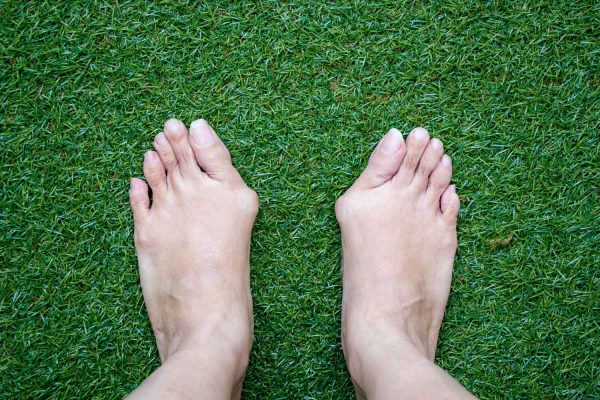Pediatric orthopedics is a specialized branch of medicine that focuses on the musculoskeletal system in children. This field addresses a wide range of orthopedic diseases affecting the pediatric population’s bones, joints, muscles, ligaments, and tendons. This article will explore the intricacies of pediatric orthopedics, shedding light on common orthopedic diseases that can impact children’s health and development.
Table of Contents
The Significance of Pediatric Orthopedics
Pediatric orthopedics plays a crucial role in the comprehensive care of children, ensuring that musculoskeletal issues are identified and addressed early in life. The musculoskeletal system undergoes significant changes during childhood, and any abnormalities or diseases in this system can profoundly impact a child’s growth, mobility, and overall well-being.
Common Orthopedic Diseases in Children
Developmental Dysplasia of the Hip (DDH)
- In DDH, the hip joint does not grow normally, which can cause instability and even dislocation.
- Early detection and intervention are essential to guide the hip joint into normal development.
Scoliosis
- An abnormal curvature of the spine, commonly identified during adolescence, is the hallmark of scoliosis.
- Pediatric orthopedic specialists employ various braces and surgical treatments to manage scoliosis and prevent further curvature.
Clubfoot
- Clubfoot is a congenital condition where a newborn’s foot turns inward and downward.
- Orthopedic interventions, such as casting and stretching, are initiated shortly after birth to correct the foot’s position.
Limb Length Discrepancy
- This condition involves a noticeable difference in the length of a child’s limbs.
- Pediatric orthopedic treatments may include surgical interventions, braces, or other corrective measures.
Osteogenesis Imperfecta (OI)
- OI is a hereditary condition that causes brittle bone disease, or frail, easily broken bones.
- Pediatric orthopedic management focuses on fracture prevention, physical therapy, and supportive care.
Juvenile Idiopathic Arthritis (JIA)
- JIA is a chronic, inflammatory joint disease that affects children.
- Pediatric orthopedic specialists collaborate with rheumatologists to manage symptoms and prevent joint damage.
Diagnosis and Treatment Approaches
Diagnostic Modalities
- Imaging Techniques: X-rays, MRIs, and CT scans are commonly used to visualize the musculoskeletal system and identify abnormalities.
- Clinical Examination: Thorough physical examinations help pediatric orthopedic specialists assess a child’s range of motion, strength, and overall musculoskeletal health.
Treatment Strategies
- Bracing and Casting: Non-surgical interventions like braces and casting are often employed to correct musculoskeletal issues in children.
- Surgical Interventions: In cases where surgery is necessary, pediatric orthopedic surgeons perform procedures ranging from simple corrections to complex reconstructions.
Rehabilitation and Physical Therapy
- Rehabilitation Programs: Physical therapists play a vital role in pediatric orthopedics, assisting children in recovering from surgery or managing conditions through targeted exercises.
- Occupational Therapy: Occupational therapists focus on enhancing a child’s ability to perform daily activities, improving their overall quality of life.
The Role of Pediatric Orthopedic Specialists
Pediatric orthopedic specialists are healthcare professionals with expertise in diagnosing and treating musculoskeletal conditions in children. Their role extends beyond medical interventions, encompassing patient education, emotional support, and collaborative care with other healthcare providers.
Ensuring Optimal Growth and Development
Nutritional Considerations
- Adequate nutrition is crucial for children’s optimal development of bones and muscles.
- Pediatric orthopedic specialists may collaborate with nutritionists to address the specific dietary needs of children with musculoskeletal conditions.
Long-Term Monitoring and Follow-Up
- Regular check-ups are essential to monitor a child’s growth and development, especially after surgical interventions.
- Pediatric orthopedic specialists work closely with families to ensure ongoing support and address emerging concerns.
Conclusion
Pediatric orthopedics plays a pivotal role in safeguarding the musculoskeletal health of children. From early detection of developmental issues to comprehensive treatment approaches, the field encompasses many orthopedic diseases affecting the pediatric population. Through timely interventions, rehabilitation, and long-term monitoring, pediatric orthopedic specialists contribute to children’s well-being and future mobility.
Understanding the intricacies of pediatric orthopedics empowers parents, caregivers, and healthcare professionals to provide holistic care for children with musculoskeletal conditions. As advancements in medical technology and research continue, the field of pediatric orthopedics remains dedicated to enhancing the lives of young individuals, fostering optimal growth, and ensuring a foundation for a healthy, active future.




